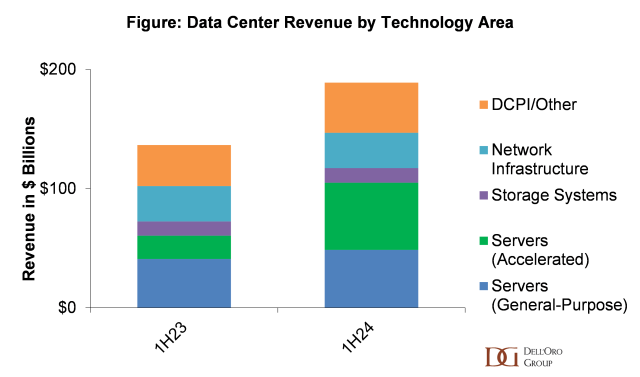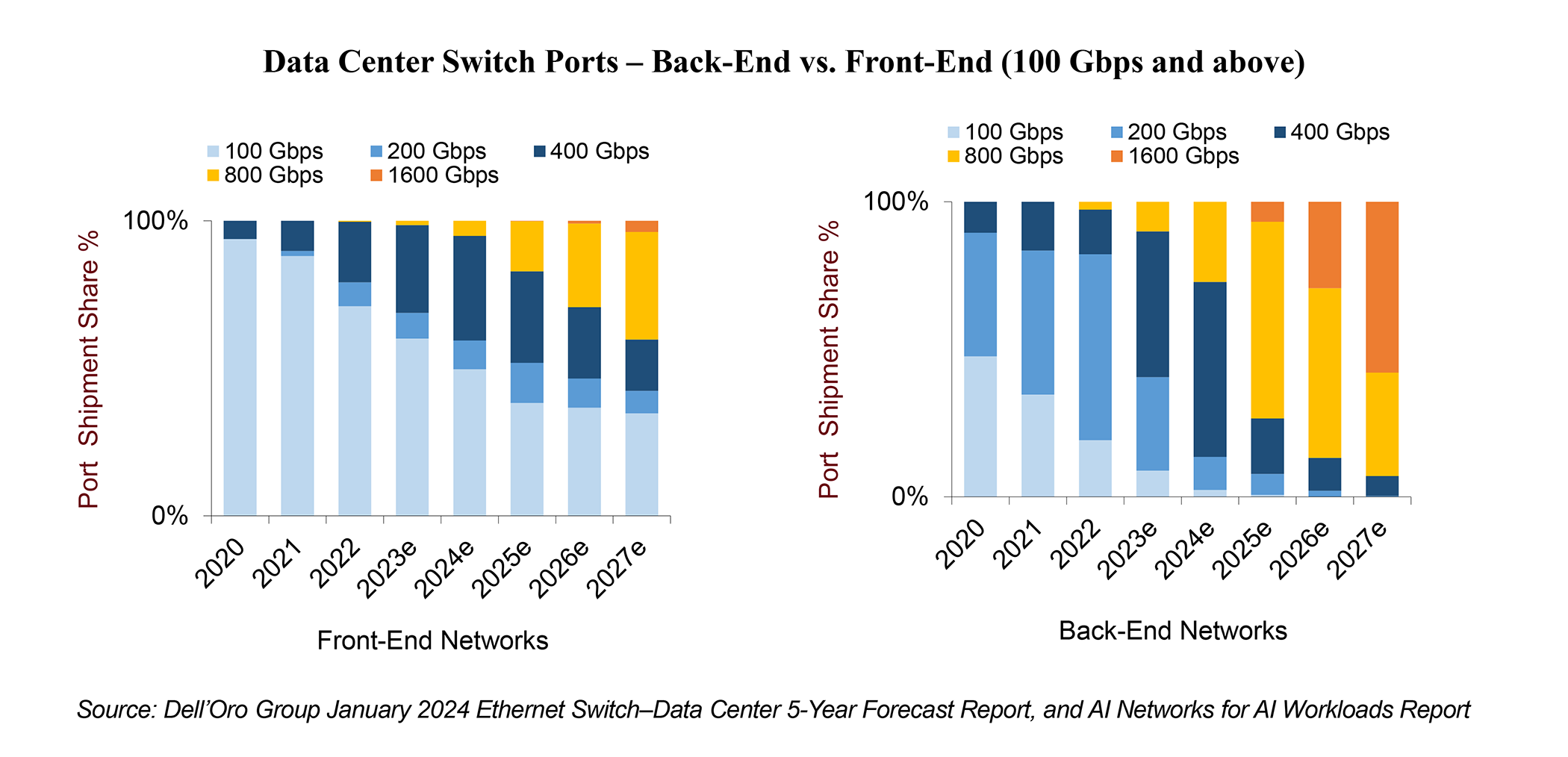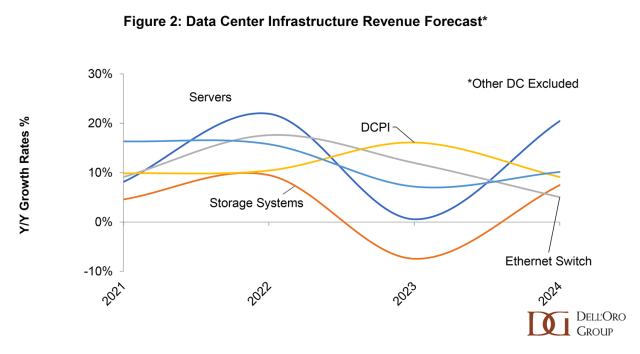The 2024 OCP Global Summit theme was “From Ideas to Impact,” but it could have been “AI Ideas to AI Impact.” Accelerated computing infrastructure was front and center starting with the keynote, on the exhibition hall floor, and in the breakout sessions. Hyperscalers and the ecosystem of suppliers that support them were eager to share what they’ve been working on to bring accelerated computing infrastructure and AI workloads to the market, at scale. As you may expect with anything AI related, it drew a crowd – Over 7000 attendees participated in the event in 2024, a significant increase from ~4500 last year. Throughout the crowds, sessions, and expo hall, three key themes stood out to me: Power and cooling designs for NVIDIA GB200 NVL Racks, an explosion of interest in liquid cooling, and sustainability’s presence among the AI backdrop.
Powering and Cooling NVIDIA GB200 NVL Racks
It’s well known that accelerated computing infrastructure significantly increases rack power densities. This has posed a significant challenge for traditional data center designs, where compute and physical infrastructure are developed and deployed in relative isolation. Deploying accelerated computing infrastructure has forced a rethink, where these boundaries are removed to create an optimized end-to-end system to support next generation “AI factories” at scale. The data center industry is acutely aware this applies to power and cooling, with notable announcements and OCP contributions from industry leaders in how they are addressing these challenges:
- Meta kicked off the keynote by announcing Catalina, a rack-scale infrastructure design based on NVIDIA GB200 compute nodes. This design increased the power requirements from 12 – 18 kW/rack to 140 kW/system. To no surprise, Catalina utilizes liquid cooling.
- NVIDIA contributed (open-sourced) elements of its GB200 NVL72 design, including a powerful 1400-amp bus bar for distributing power in the rack, and many liquid cooling contributions related to the manifold, blind mating, and flow rates. Lastly, NVIDIA recognized a new ecosystem of partners focused on the power and cooling infrastructure, highlighting Vertiv’s GB200 NVL72 reference architecture, which enables faster time to deployment, utilizes less space, and increases cooling energy efficiency.
- Microsoft emphasized the need for liquid cooling for AI accelerators, noting retrofitting challenges in facilities without a chilled water loop. In response, they designed and contributed a custom liquid cooling heat exchanger, which leverages legacy air-based data center heat rejection. This is what I would refer to as air-assisted liquid cooling (AALC), more specifically, an air-assisted coolant distribution unit (CDU), which is becoming increasingly common in retrofitted accelerated computing deployments.
- Microsoft also announced a collaborative power architecture effort with Meta, named Mt. Diablo based on a 400 Vdc disaggregated power rack, that will be contributed to the OCP soon. Google also highlighted the potential use of 400 Vdc for future accelerated computing infrastructure.
Data Center Liquid Cooling Takes Center Stage
Liquid cooling was among the most discussed topics at the summit, mentioned by nearly every keynote speaker in addition to dozens of breakout sessions dedicated to its growing use in compute, networking, and facility designs. This is justified from my perspective, as Dell’Oro Group previously highlighted liquid cooling as a technology going mainstream creating a $15 B market opportunity over the next five years. Furthermore, the ecosystem understands that not only is liquid cooling a growing market opportunity, but a critical technology to enable accelerated computing and the growth of AI workloads at scale.
There was not just liquid cooling talk, but partnerships and acquisitions leading up to and during the global summit that further cemented the critical role data center liquid cooling will play in industries’ future. This was highlighted in the following announcements:
- Jabil acquired Mikros Technologies: Kicking off two weeks of big announcements, Jabil’s acquisition of Mikros brings together Mikros’s expertise in liquid cooling cold plate technology, engineering and design with Jabil’s manufacturing scale. This appears to position Mikros’s technology as a high-volume option for hyperscale end-users and the greater data center industry in the near future.
- Jetcool announced facility CDU, Flex partnership: Jetcool, most known for their air-assisted liquid cooling infrastructure packaged in single servers, introduced a facility CDU (liquid-to-liquid) to keep pace with the market’s evolution towards purpose-built AI factories. The partnership brings together a technology specialist with a contract manufacturer to enable the coming scale needed to support hyperscale end-users and the greater data center industries’ liquid cooling needs.
- Schneider Electric acquired Motivair: On the Summit’s final day, Schneider Electric announced its $1.13B acquisition of Motivair. This move, following prior partnerships and organic CDU developments, expands Schneider’s high-density cooling portfolio. This now gives Schneider a holistic power and cooling portfolio to support large-scale accelerated computing deployments, a capability previously exclusive to Vertiv, albeit at a high cost for Schneider.
Sustainability Takes a Back Seat but Is Still Very Much Part of the Conversation
While sustainability did not dominate the headlines, it remained a recurring theme throughout the summit. As AI growth drives massive infrastructure expansion, sustainability has become a critical consideration in data center designs. OCP’s CEO George Tchaparian characterized sustainability’s role alongside AI capex investments best, “Without sustainability, it’s not going to sustain.” Other highlights include:
- OCP announced a new alliance with Net Zero Innovation Hub, an organization focused on net-zero data center innovation in Europe. Details on the alliance were sparse, but more details are expected to emerge on this partnership at the 2025 OCP EMEA Regional Summit.
- Google shared a collaboration with Meta, Microsoft, and Amazon on green concrete. Most impressively, this collaboration began with a roadmap around the time of last year’s OCP Summit, which resulted in a proof-of-concept deployment in August 2024, reducing concrete emissions by ~40%.
- A wide range of other sustainability topics were discussed. Improvements in cooling efficiency, water consumption, heat reuse, clean power, lifecycle assessment, and metrics to measure and track progress related to data center efficiency and sustainably were all prevalent.
Conclusion: Data Center Power and Cooling is Central to the Future of the Data Center Industry
The 2024 OCP Global Summit left me as confident as ever in the growing role data center power and cooling infrastructure has in the data center industry. It’s not only improvements to existing technologies but the adoption of new technologies and facility architectures that have emerged. The event’s theme, “From Ideas to Impact,” serves as a fitting reminder of how AI is reshaping the industry, with significant implications for the future. As we look ahead, the question isn’t just how data centers will power and cool AI workloads, but how they’ll do so sustainably, efficiently, and at an unprecedented scale.



